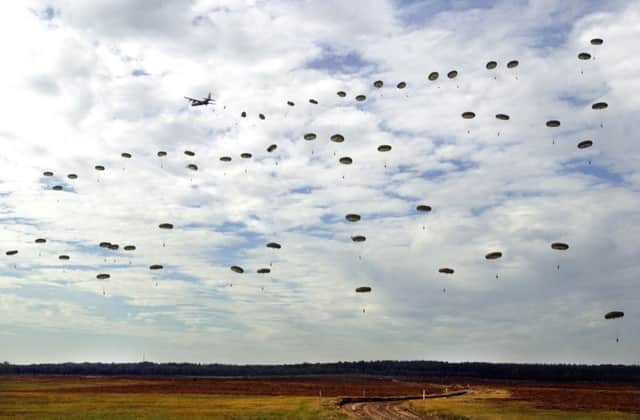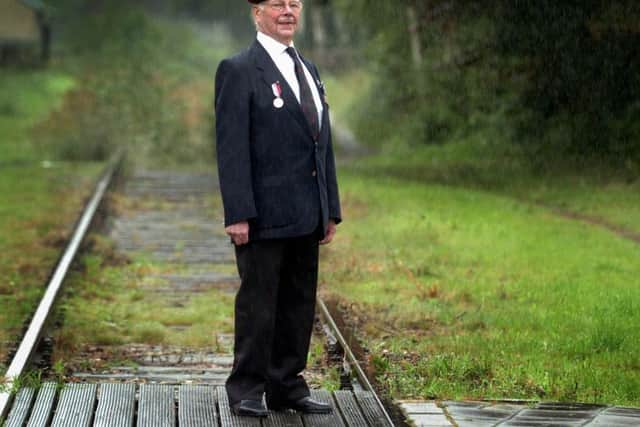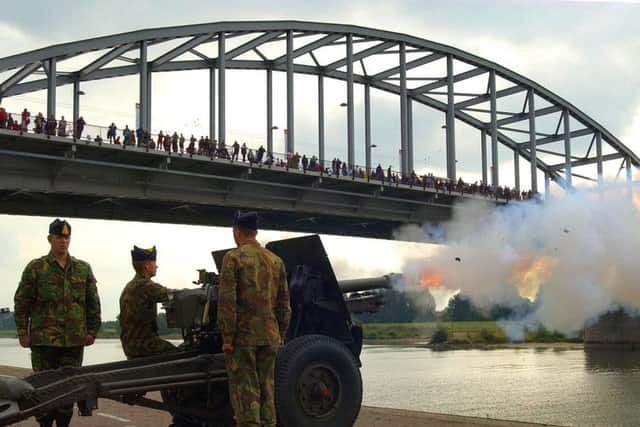Battle of Arnhem 75: What went wrong with Operation Market Garden


BOLDNESS and egotism are often essential qualities for leaders who are asking their followers to die for a noble cause. Field Marshall Montgomery had both attributes in abundance. In the early autumn of 1944, he seemed incapable of putting a foot wrong as the allies marched towards an apparently swift victory in the aftermath of D-Day.
Montgomery’s victories in the desert, although costly, had helped to boost Britain’s morale and reputation earlier in the war, and few questioned his competence as the conflict headed towards its final phase. His army’s speedy progress across France over the summer of 1944 seemed to confirm that Montgomery’s supreme self confidence was not misplaced, even if some of his fellow commanders found it hard to contain their exasperation at his arrogance.
Advertisement
Hide AdAdvertisement
Hide AdSo when Montgomery devised his most audacious plan of all, a scheme to end the war by capturing the bridges across the Rhine, there may have been a few raised eyebrows, but no concerted attempt was made to thwart the operation. Monty had been vindicated so many times before.


It was to prove a terrible failure, which traumatised all those who survived it and led to horrible reprisals for the brave Dutch citizens who tried to help their liberators.
Arnhem - Operation Market Garden - is remembered as the largest airborne battle in history and Montgomery’s only major defeat. The allies attempted to gain their bridgehead over the Rhine by dropping three divisions of paratroops and gliders (two American and one British) a long way behind German lines in the belief they would meet with little opposition because the German army was in full retreat.
The key aim was to seize the bridge at Arnhem. Once this was secure, it was believed, the Lower Rhine would soon fall to the allies. Berlin would soon be in their sights.


Advertisement
Hide AdAdvertisement
Hide AdBad planning and fierce German resistance meant that only a small number of airborne troops reached their planned destinations, such as Arnhem bridge. “After an eight day battle, in which on the fifth day, a brigade of Polish parachute troops managed to link up with the original force, the bridge over the Rhine at Arnhem was retaken by the Germans,” wrote Martin Gilbert, in his definitive history of the Second World War. “In all, more than 6,000 of the original force of 35,000 men were taken prisoner; just over 2,000 succeeded in recrossing the Rhine to safety.”
Altogether, 1,400 airborne troops had been killed. Those who survived, such as Norman Jones, from Leeds, never forgot the carnage of
Arnhem.
Mr Jones, a sergeant major with the Army Physical Training Corps who parachuted into action with 10 Battalion, the Parachute Regiment, told The Yorkshire Post in 2008: “We were on our way into action, and we came up this railway line and there were German bodies scattered all
around. What happened seems very close to me sometimes. I can be watching the television and something comes on and it brings things back very vividly, and it’s almost as though I’m back there.”
Advertisement
Hide AdAdvertisement
Hide AdMr Jones, who died in 2015, fought for six days in the battle before being blown up by a grenade and taken prisoner. There were plenty of tales of heroism. Martin Gilbert relates the story of Major Richard Lonsdale, who commanded a small force of men, who had become separated from their units. This tiny force secured a part of the perimeter through which many of the survivors of the airborne attack were able to escape back across the Rhine. When the force withdrew, Lonsdale was the last to leave.
Major Robert Cain, the only winner of the Victoria Cross at Arnhem to survive the battle, played his own deadly game, firing bombs over the roof of a ruined building at advancing Germans. He refused to leave the thick of battle, even after one of the bombs exploded in its launcher, leaving him temporarily blinded.
Antony Beevor, in his superb book, Arnhem, recounts what happened next: “After a short rest he discharged himself and went back. He soon
heard a cry of “Tigers” so he ran to the six pounder anti tank gun. Cain called to another soldier to help him and they achieved a first-round hit, which brought the tank to a halt.”
Advertisement
Hide AdAdvertisement
Hide AdIt may have seemed a stirring display of paratroop power in its early stages, but the campaign was to cast a cloud over the reputations of all those who planned it. But was it bad luck or bad judgement that led to its failure?
“Operation Market Garden ultimately failed because it was too ambitious,” according to Samuel Wallace, a postgraduate researcher
from the University of Leeds. “It required two plans, an airborne operation (Operation Market) and a ground offensive (Operation Garden), both of them bold in their own right, to go off with scarcely a hitch. Market had to seize and hold nine bridges in Eindhoven, Nijmegen and Arnhem, while the ground forces undertaking Garden had to fight their way along a single road surrounded by deep marshes to relieve them; if the plan went too badly awry at any of these points, it jeopardised the rest of the operation. The loss of the bridge at Son, and the inability of 82nd Airborne to take Nijmegen swiftly enough, are both examples of a number of failings that ultimately prevented ground forces from relieving the airborne troops at Arnhem, and causing the operation to fail.
“To top this off, the operation was prepared with considerable haste, shunning meticulous preparation for speed, which further heightened the risk. Troops had little time to prepare or rehearse, there was a shortage of transport aircraft which meant the landings were staggered and impeded by bad weather, and vital intelligence, which showed a far greater number of German troops in the area, notably the II SS Panzer Corps, than originally presumed, was missed. To lay these shortcomings on top of an already audacious plan was to seriously damage Allied chances of success.”
Advertisement
Hide AdAdvertisement
Hide AdBut which commander must take the lion’s share of the blame for this botched operation?
Wallace says:”Market Garden had sufficient flaws and failings that it is impossible to place blame for the failure of such a large operation on any single person, but ultimately the buck must stop with the senior Allied commanders, including Montgomery, who sanctioned such a large operational gamble, as well as the officers who convinced them it was feasible, such as Lewis Brereton and Frederick ‘Boy’ Browning.
“Both of the latter, the commander of the 1st Allied Airborne Army and the 1st British Airborne Corps respectively, not only helped to brush aside concerns in launching Market Garden, but also contributed to the operation’s failure directly, Brereton by limiting the number of airdrops
Allied airborne troops could make in a single day, sacrificing rapid and concentrated striking power, and Browning by diverting James Gavin’s 82nd Airborne away from Nijmegen Bridge towards the Groesbeek Heights, which meant the bridge remained untaken.”
Advertisement
Hide AdAdvertisement
Hide Ad“The failure of Market Garden probably had less of an impact on the course of the war than its reputation might suggest,” Wallace adds.
“The inability of the Allies to capture Arnhem certainly cut off a possible avenue of advance that might have sped up the German collapse, but with the Allies still not in control of the vital port of Antwerp, the capture of which was delayed as a result of Market Garden, they might not have had sufficient supplies to maintain the more aggressive push into northern Germany Montgomery had hoped for.”
Wallace adds: “The worst consequence of the failure of Market Garden was actually its impact on the people of the Netherlands, as a particularly harsh winter was made worse by the Germans instituting an embargo on food transport into the country, in retaliation for a series of strikes by Dutch workers intended to support Allied liberation efforts by undermining German war efforts. The Hongerwinter saw around 20,000 deaths among the Dutch populace.”
In Arnhem, Antony Beevor chronicles the suffering of the Dutch in the months following Market Garden; “The Nazis wanted revenge on the Dutch population as a whole for having helped the Allies and they intended to use the twin weapons of oppression and starvation. Many members of the underground. who had helped and fought so bravely beside the Allies, were executed by the Germans. Some 3,000 people were shot during the occupation, and the largest proportion of that total was linked to Operation Market Garden.”
Advertisement
Hide AdAdvertisement
Hide AdBeever quotes General David Fraser, who fought at Nijmegan: “Operation Market Garden was, in an exact sense, futile. It was a thoroughly bad idea, badly planned and only - tragically - redeemed by the outstanding courage of those who executed it.”
But the sacrifices made in the battle for the bridges continue to move and inspire a new generation. Eleven years ago, Norman Jones was among the guests of honour at the unveiling of a series of memorials to the battle to free Holland from Nazi occupation. They remind us that we must never take fundamental rights for granted.
Annelies van der Kolk of the Gelderland regional government, which helped to fund the route, said: “It is of vital importance for young people that they experience the memory of a darker period in history and understand that some things are worth fighting for every day.”
Week of commemorations
A series of special events will take place this week to commemorate the 75th anniversary of the battle.
Advertisement
Hide AdAdvertisement
Hide AdOn Saturday, the Prince of Wales will attend a commemorative service and wreath-laying at Ginkel Heath near Ede, with Princess Beatrix of the Netherlands.
The day before, the Commonwealth War Graves Commission will launch a Voices of Liberation sound installation at CWGC Oosterbeek War Cemetery and the Bridge to Liberation Experience, a multimedia show using the bridge as a backdrop.
A further memorial service will take place at the cemetery - where 1,684 Commonwealth, 79 Polish, and three Dutch servicemen are buried or commemorated - on Sunday as part of the commemorations.